- Learning time
- 20 minutes
- First play time
- 80 minutes
Gheos
Designed by: René Wiersma
In the game Gheos, you are Gods, playing – well, God – with the advancement of several tribes of people as you create the world around them. The process of doing so simple: add a triangular tile to an expanding network of such tiles. But the decisions about which tile and where it goes is somewhat more complex.
You’ll have a hand of three tiles and on your turn, you play a single tile and draw back up to three. The tiles can go anywhere: showing a mix of land mass and water, all tiles connect in one way or another. If you begin a new continent, which is any land mass that still has room for expansion, you must add a coloured disc there denoting the existence of a new tribe. If you do so, you get matching followers (- the cubes) of the amount of wheat symbols on the new continent. If you didn’t begin a new continent, you may take a follower of any one of the tribes that currently exist on the board. Followers will score points, but before we get to that it’s worth noting what the other symbols on the tiles do.
There are three basic symbols in wheat, swords and cups. Cups are an avenue to point-scoring: everyone one has three scoring tokens and may choose to cash one in and get points equal to followers of a tribe they own x cups in territories that tribe currently controls. Swords perhaps unsurprisingly are there to settle differences between the tribes. It’s very easy to join up two separate continents because not only can you build outwards from existing tiles, you can also build on top of them. If two tribes are joined when this happens, it’s war, and the side with most swords will basically wipe out the lesser tribe: they are gone from play and so are any followers you owned of that tribe.
Lastly wheat decides where a migrating tribe will go: just as you can bring divergent continents together, you can also split a continent as well. In this instance the tribe will migrate to the land mass with the most wheat on it, and the player who split the continent may start a new tribe on the other, newly-minted, continent.
It’s worth bearing in mind however that to cause a war or migration you must pay a follower of your own back to the supply.
There are some other symbols too: temples that provide instant points when joined to continents with matching symbols (a cup temple joined to a continent with three cups = three points) and pyramids that score when an Epoch tile is drawn.
Mixed into the draw-pile are nine such Epochs. When one of these is drawn, everybody scores a point per pyramid, and a new tile is drawn. When the eighth Epoch is drawn the game instantly ends: all tribes score one final time and the player with the most points wins.
The guru's verdict
-
Take That!
Take That!
Plenty. You can collaborate to build an expansive, rewarding continent... but you can also split the continent in half and expunge your rivals' followers from existence.
-
Fidget Factor!
Fidget Factor!
Potentially high. You only have three tiles to choose from, but the ramifications to where one single tile can go need to be considered.
-
Brain Burn!
Brain Burn!
The rules are pretty simple, but the game is not exactly brisk. It's an expanding, interactive and occasionally explosive puzzle.
-
Again Again!
Again Again!
There's a reasonable degree of variety in the tiles, but what changes Gheos from game is the decision-making from the players. You can be very aggressive, play safely defensive (not recommended), or attempt to strike some kind of Darwinian balance between the two.



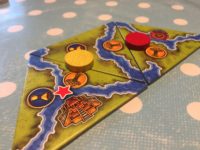
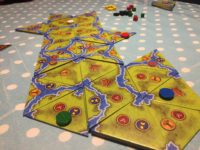

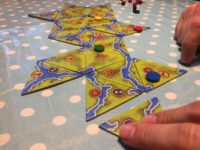


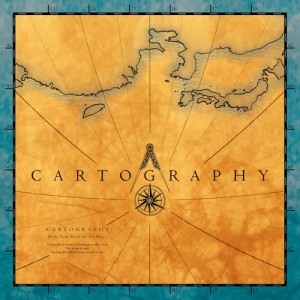
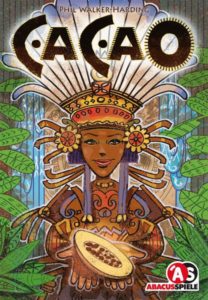
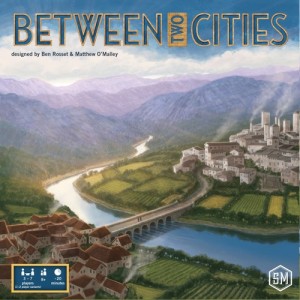
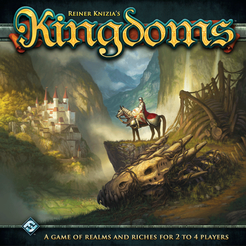
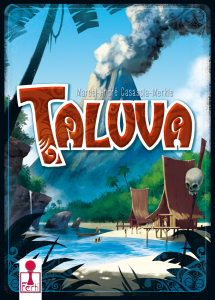
Sam says
Gheos will really scratch the itch of a certain gamer, who likes abstract, combative puzzles such as Go or the bordering-on-nasty brinkmanship of The Estates. While I've enjoyed both of those games, neither have my go-to preferences of reasonably speedy play and a bit of story to them. So I didn't love Gheos, but I can certainly see why some would: the shifting-sands of the landscape can allow for big swings of control from one player to another, and there's scope for clever, brutal plays.